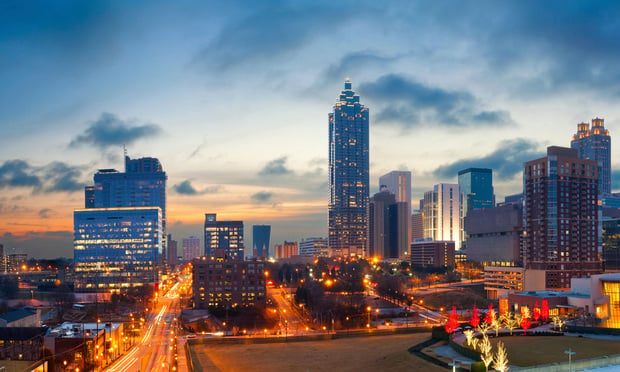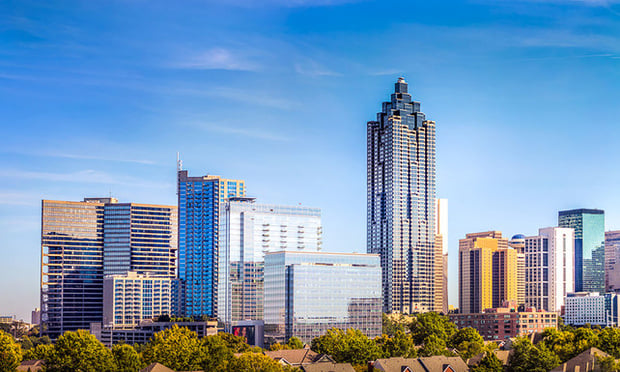ATLANTA—Materials costs aren't getting any cheaper. Labor costs are rising. So what about cap rates for commercial real estate projects in the Southeast?
GlobeSt.com caught up with Callum Parrott, executive managing director for the Southeast Region for Mill Creek Residential, the second-largest multifamily developer in the US according to the most Recent NMHC ranking. The company has a substantial presence in the Southeast and Parrott has his eye on cap rates.
GlobeSt.com: The Atlanta and South Florida areas are booming with development. What is so attractive about those markets?
Parrott: It's exciting to create new communities in areas of Atlanta and South Florida that didn't exist a decade ago. Dadeland is a specific example, where there was one condo built last cycle and now there are four apartment communities, and we've kind of created a neighborhood. What's attractive in that market in particular is that you have public transit, which is unique for South Florida, and at that location you have the regional mall and grocery stores with walkability.
GlobeSt.com: What are you seeing with regard to cap rates in the Southeast?
Parrott: For the right sites, we're still seeing low cap rates. But we're still able to find great sites with enough of a spread between cap rates and going in yields.
GlobeSt.com: Are cap rates still at the point that it seems more valuable to develop than buy?
Parrott: It depends on the asset, but yes. We can still build cheaper than we can buy a midrise or high-rise asset. If you look at what's going to sell in the next 12 months, from what I understand, those prices are still higher than what I can build for. It still makes sense to develop.
GlobeSt.com: Are construction costs beginning to level out or are they continuing to rise? And what is most responsible for the rising costs, such as labor and materials?
Parrott: It's still a challenge. I think we're probably seeing more plateau in pricing than decreases.
In various trades, we'll hopefully start to see some relief. Labor is the biggest challenge and it's not necessarily just the price of the labor, but also the quality of the labor we're finding.
How long can we go without a 2008 repeat? Click here to get some insights.
ATLANTA—Materials costs aren't getting any cheaper. Labor costs are rising. So what about cap rates for commercial real estate projects in the Southeast?
GlobeSt.com caught up with Callum Parrott, executive managing director for the Southeast Region for Mill Creek Residential, the second-largest multifamily developer in the US according to the most Recent NMHC ranking. The company has a substantial presence in the Southeast and Parrott has his eye on cap rates.
GlobeSt.com: The Atlanta and South Florida areas are booming with development. What is so attractive about those markets?
Parrott: It's exciting to create new communities in areas of Atlanta and South Florida that didn't exist a decade ago. Dadeland is a specific example, where there was one condo built last cycle and now there are four apartment communities, and we've kind of created a neighborhood. What's attractive in that market in particular is that you have public transit, which is unique for South Florida, and at that location you have the regional mall and grocery stores with walkability.
GlobeSt.com: What are you seeing with regard to cap rates in the Southeast?
Parrott: For the right sites, we're still seeing low cap rates. But we're still able to find great sites with enough of a spread between cap rates and going in yields.
GlobeSt.com: Are cap rates still at the point that it seems more valuable to develop than buy?
Parrott: It depends on the asset, but yes. We can still build cheaper than we can buy a midrise or high-rise asset. If you look at what's going to sell in the next 12 months, from what I understand, those prices are still higher than what I can build for. It still makes sense to develop.
GlobeSt.com: Are construction costs beginning to level out or are they continuing to rise? And what is most responsible for the rising costs, such as labor and materials?
Parrott: It's still a challenge. I think we're probably seeing more plateau in pricing than decreases.
In various trades, we'll hopefully start to see some relief. Labor is the biggest challenge and it's not necessarily just the price of the labor, but also the quality of the labor we're finding.
How long can we go without a 2008 repeat? Click here to get some insights.
Want to continue reading?
Become a Free ALM Digital Reader.
Once you are an ALM Digital Member, you’ll receive:
- Breaking commercial real estate news and analysis, on-site and via our newsletters and custom alerts
- Educational webcasts, white papers, and ebooks from industry thought leaders
- Critical coverage of the property casualty insurance and financial advisory markets on our other ALM sites, PropertyCasualty360 and ThinkAdvisor
Already have an account? Sign In Now
*May exclude premium content© 2024 ALM Global, LLC, All Rights Reserved. Request academic re-use from www.copyright.com. All other uses, submit a request to [email protected]. For more information visit Asset & Logo Licensing.









